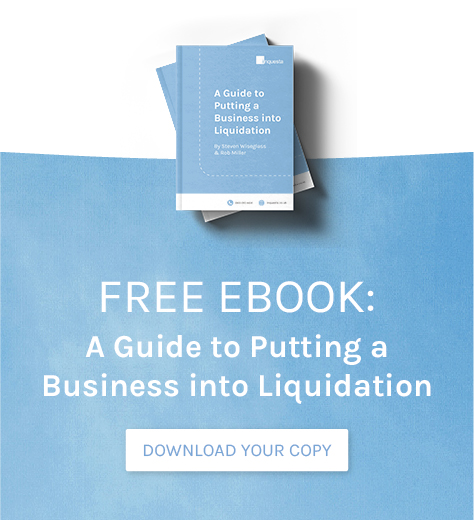A winding up petition is one of, if not the biggest red flags a business can receive. It represents the most severe action a creditor can take against a business. Unless dealt with quickly, a winding up order can be the death knell for any company, leading to a cease in trading, and a quick closure. This is why understanding how to stop a winding up petition is essential.
Whether you’re concerned about the prospect of a winding up petition heading your way, or one has already been issued, seeking specialist advice at your earliest opportunity gives you the best possible chance of dealing with the issue successfully.
What Does a Winding Up Petition Mean?
A winding up petition is often used as a last resort by creditors trying to recoup money owed. It is a legal notice obtained through the courts requesting that the debtor’s company be closed down, with the intention of using any proceeds recovered to pay back the debt. For a winding up petition to be considered, the debt must be more than £750 and be outstanding for more than 21 days.
Petitioning for a company to be wound up is an extremely serious course of action to take. However, they often come about because the creditor feels they have run out of options in trying to chase the debt, or have no faith in the debtor’s ability to pay them back.
What to do if You’ve Received a Winding Up Petition
Receiving a winding up petition can be a stressful time. With the potential for your business to be liquidated, it is understandable to be a tad tense. However, all is not lost, you do have options.
Act Fast
Ignoring a winding up petition and hoping it will go away just isn’t an option. The best thing you can do is act smart and act fast.

A creditor must allow for seven days after the petition is served before it is made public and sanctions begin to take place. If a winding up petition is served, it is vital that you are prepared and know the plan.
It is possible to stop the petition advert being placed in the London Gazette, but you need to be quick. If you receive a petition, seeking professional advice to handle the situation promptly could give you the best chance of stopping the petition and heading liquidation off.
How to Stop a Winding Up Petition
A winding up petition can be an intimidating thing for a business to receive, with the potential future of the business hanging in the balance it is important that you know what can be done to put a stop to it.
Communicate with Creditors
If you believe that you and your company can pay the accrued debt, but won’t be able to immediately, contact your creditors at your earliest opportunity. It may be possible to come to some form of informal agreement.
This would act as a way to assure creditors that they would receive their money, while affording you some time to get your affairs in order and pay them back in a way that won’t cripple your business.
However, something important to note when considering this course of action is that just the act of acquiring a winding up petition can cost creditors thousands of pounds in legal fees. So in most cases a creditor only goes down this route as a form of last resort, meaning they will expect their payment quickly, in full, including their additional costs. This can make coming to an informal agreement incredibly difficult.
Dispute the Debt
If you believe that receiving a winding up petition is unjust, you could be able to apply for an injunction. While it is highly unlikely that HMRC will be incorrect in their calculations, mistakes do happen. It is therefore essential to stand your ground if you believe you do not owe the money.
Pursuing this course of action would require concrete evidence. Losing could cost you precious time at best, or you could face more serious consequences; from fines to your company being wound up and more. Legitimate disputes of a winding up petition could be:
- Unnecessarily limiting the time available for debtors to pay the due amount.
- The petition was incorrectly served
- Insufficient warning of legal action.
- Adding additional costs to pressurise
- The debt is exaggerated or does not exist
If you believe you have a grievance, seek specialist guidance as soon as possible. They will be able to look over your case and establish whether your concerns are legitimate.
Pay the Debt Upfront
Should you have the financial means, paying off the debt owed in full within seven days, including solicitor fees should result in the petition being removed from the court.
However, it is worth remembering that if the creditor does not remove the petition from the court and another company with a legitimate grievance catches wind of the situation, they may be able to take over the petition and demand you repay a debt as well. This is called a ‘change of carriage’.
If your company doesn’t currently have the finances to pay off the outstanding debt, there are always alternative payment options you can consider.
Negotiate Payment Terms
One of the most common methods utilised to stop winding up petitions is to come to terms on some sort of repayment plan. A Company Voluntary Agreement (CVA) can be arranged to restructure the payments over a fixed period of time. If the creditors agree to these terms, your company will be able to continue trading and earn money to pay off the arrears.

A CVA was introduced by the government to act as a lifeline for companies looking for a way to repay creditor debt and avoid liquidation.
Typically a firm will make one monthly payment to their creditor until the debt is paid off, usually spread over a few years.
CVAs will no longer be on the table once your company has been advertised in the Gazette, alternative solutions will have to be considered in this case.
Business Restructuring
Another alternative method of saving a company in the face of a winding up petition is to restructure the business. The most common form of restructuring is administration. This is a way to provide a business some time to assess its options and come up with a new strategy. This is because during administration, a company is (temporarily) protected from creditors.
Administration is only a viable solution if there is a legitimate possibility that it will also benefit the creditor.
Similarly to a CVA, once a company has been advertised on the Gazette administration is no longer an option.
Can I Stop a Winding Up Petition Turning Into an Order?
To stop a winding up petition becoming an order, you need to prove that your business is not insolvent, and is capable of paying back its creditors.
In order to avoid a winding up order you will need overwhelming and substantial evidence behind you, as well as assistance from experienced professionals.
How Inquesta Can Help Stop a Winding Up Petition
While a winding up order can be the death of a company, it doesn’t have to. If you are willing to go out of your way to approach the situation rationally and responsibly, you can come out of the other side.
For advice on receiving or sending winding up petitions, you can put your confidence in Inquesta. Years of experience covering this particular field means our dedicated team is more than qualified to offer guidance and support.
To find out more about how Inquesta can help you, contact a member of our team today, or request a free consultation.



